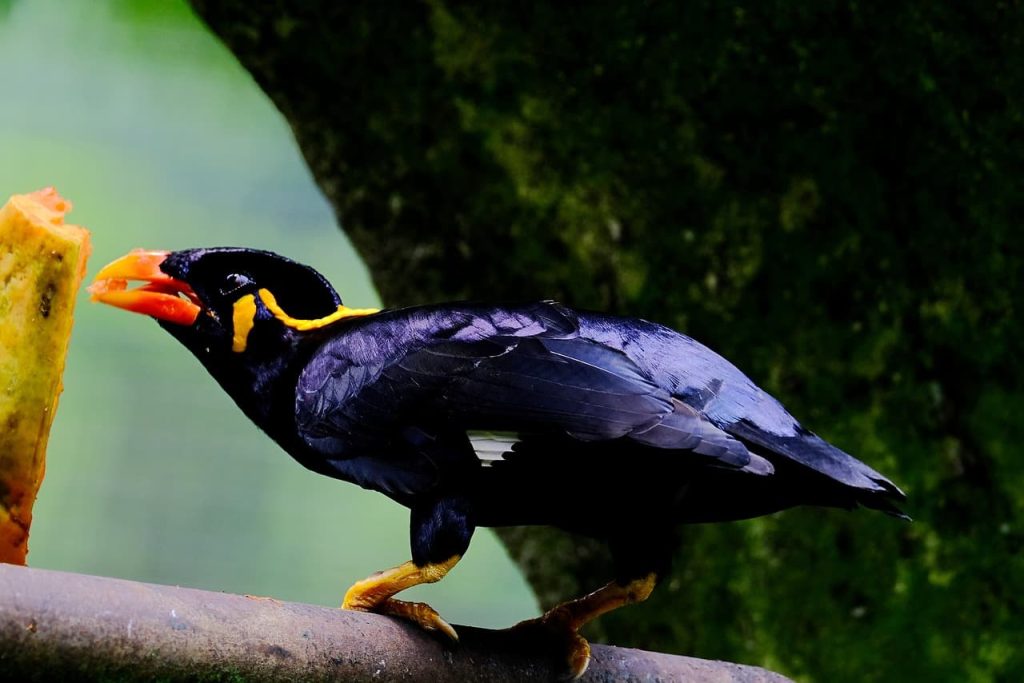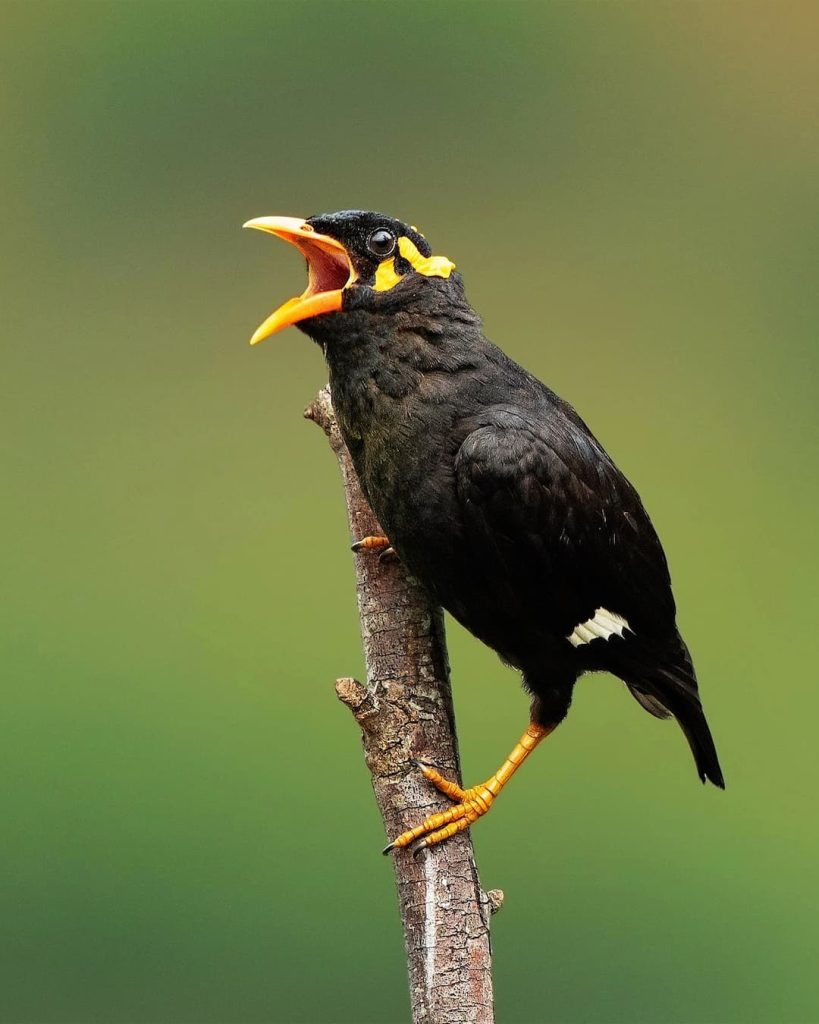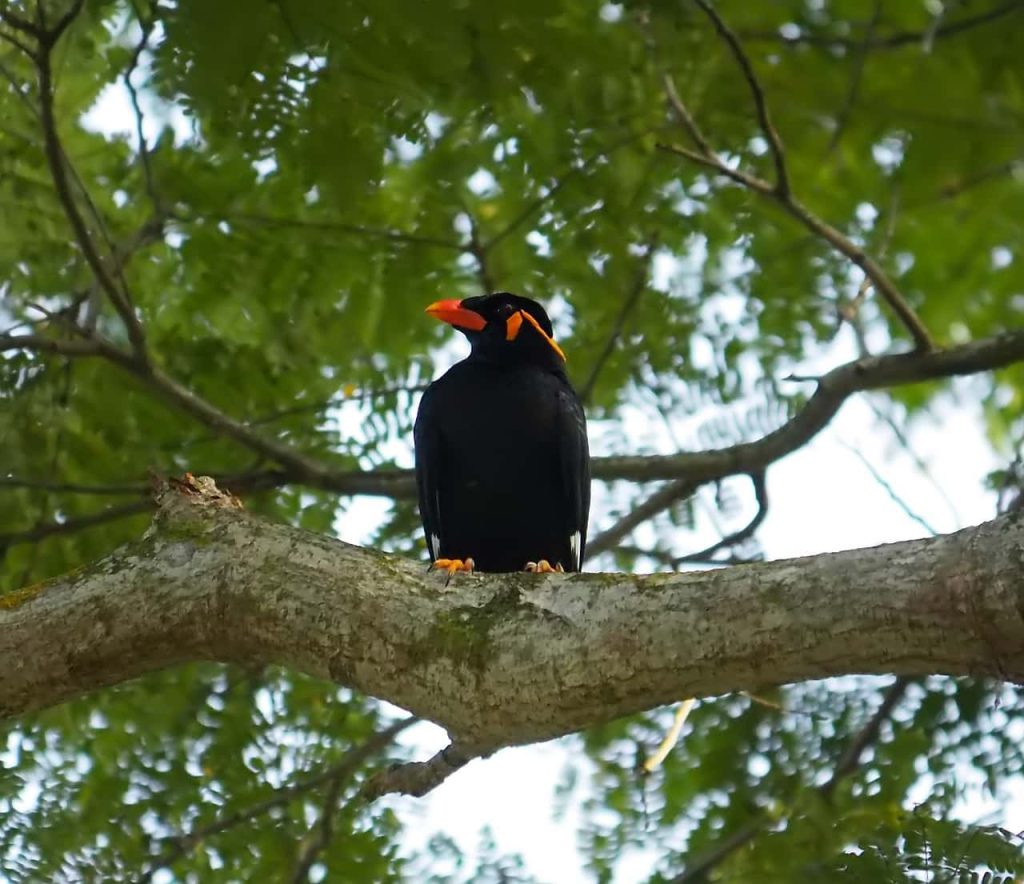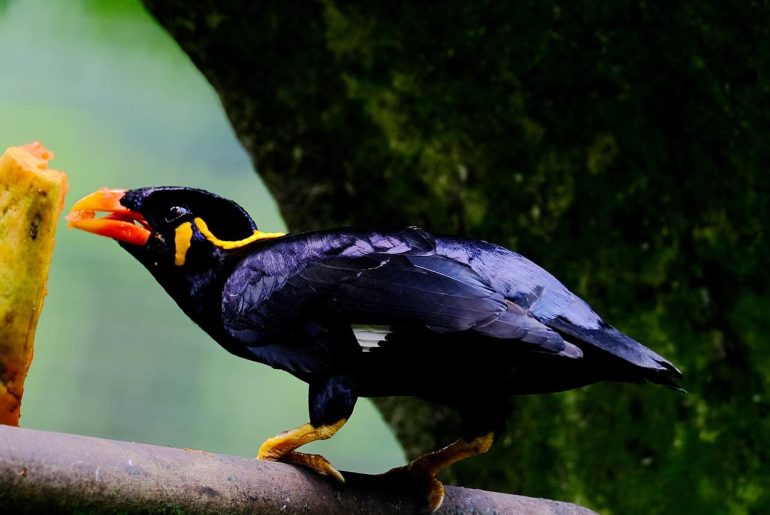
The Common Hill Myna is the state bird of Meghalaya known for its striking appearance, loud calls, and mimicry abilities. It feeds on insects, fruits, nectar, and seeds which help control pests and spread seeds of various plant species, making it an essential contributor to maintaining the ecological balance of Meghalaya. The bird is also an important indicator of the health of Meghalayas forests and ecosystems.
The Cultural and Mythical Importance of the Bird in Meghalaya

The Common Hill Myna is revered in Meghalaya’s culture as a symbol of good luck and blessings. It is believed that if the bird enters a house, it signifies the arrival of good news or guests. The Myna has also inspired artists and musicians, with its call and mimicry abilities used in traditional music and songs of the state and its striking appearance featured in various art forms.
The unique features and adaptations of the state bird
The Common Hill Myna is a bird with a yellow beak, white wing patches, and black feathers. Its curved beak helps it crack open tough seeds and shells. It has strong legs and good eyesight and hearing for locating prey to survive in tropical forests. The bird can also mimic sounds to communicate with other birds and alert them to danger.
The Role of Trees and Forests in Meghalaya’s Bird Conservation Efforts
Meghalaya’s conservation efforts for the Common Hill Myna and other bird species depend on trees and forests, which provide food, shelter, and nesting sites. Deforestation threatens the state of birds and other wildlife by reducing food sources, nesting sites, and protection and increasing the risk of habitat fragmentation. Protecting forests and the species that depend on them is crucial for the survival of the state bird of Meghalaya and other valuable species.
The Co-existence of Meghalaya’s State Bird with Other Wildlife
The hill myna, the state bird of Meghalaya, is crucial to its ecosystem. They are known for their melodic songs and distinctive calls but also play an essential role in seed dispersal and controlling insect populations. The hill myna shares its habitat with multiple bird and animal species, including the hornbill, barbet, tiger, leopard, wild boar, and deer. They are intelligent birds that can mimic human speech and sounds of other animals and often share fruit trees and hollows with other birds. The hill myna helps maintain the ecological balance by controlling herbivore populations and feeding on insects.
How Meghalaya’s State Bird is Protected and celebrated in the State

The hill myna, Meghalaya’s state bird, is protected under the Wildlife Protection Act and listed as a Near Threatened species. The Meghalaya Forest Department has implemented measures to safeguard the bird, such as conservation programs and regulations on hunting and trading. The hill myna is an important cultural symbol for the Khasi tribal community. It is celebrated during the annual Nongkrem festival through traditional dances and songs and released into the wild as a symbol of bountiful harvests.
Efforts are needed to sustain the conservation of hill myna’s habitat, regulate hunting and trading, and promote community-based initiatives. Education and awareness can also be crucial. The hill myna is important for Meghalaya’s natural heritage, culture, and ecological role. Understanding its significance inspires conservation for future generations to enjoy.






